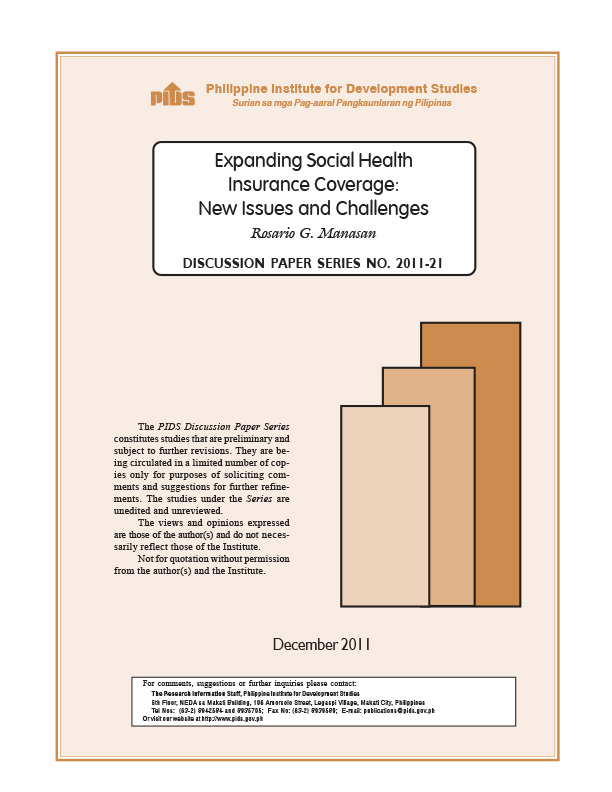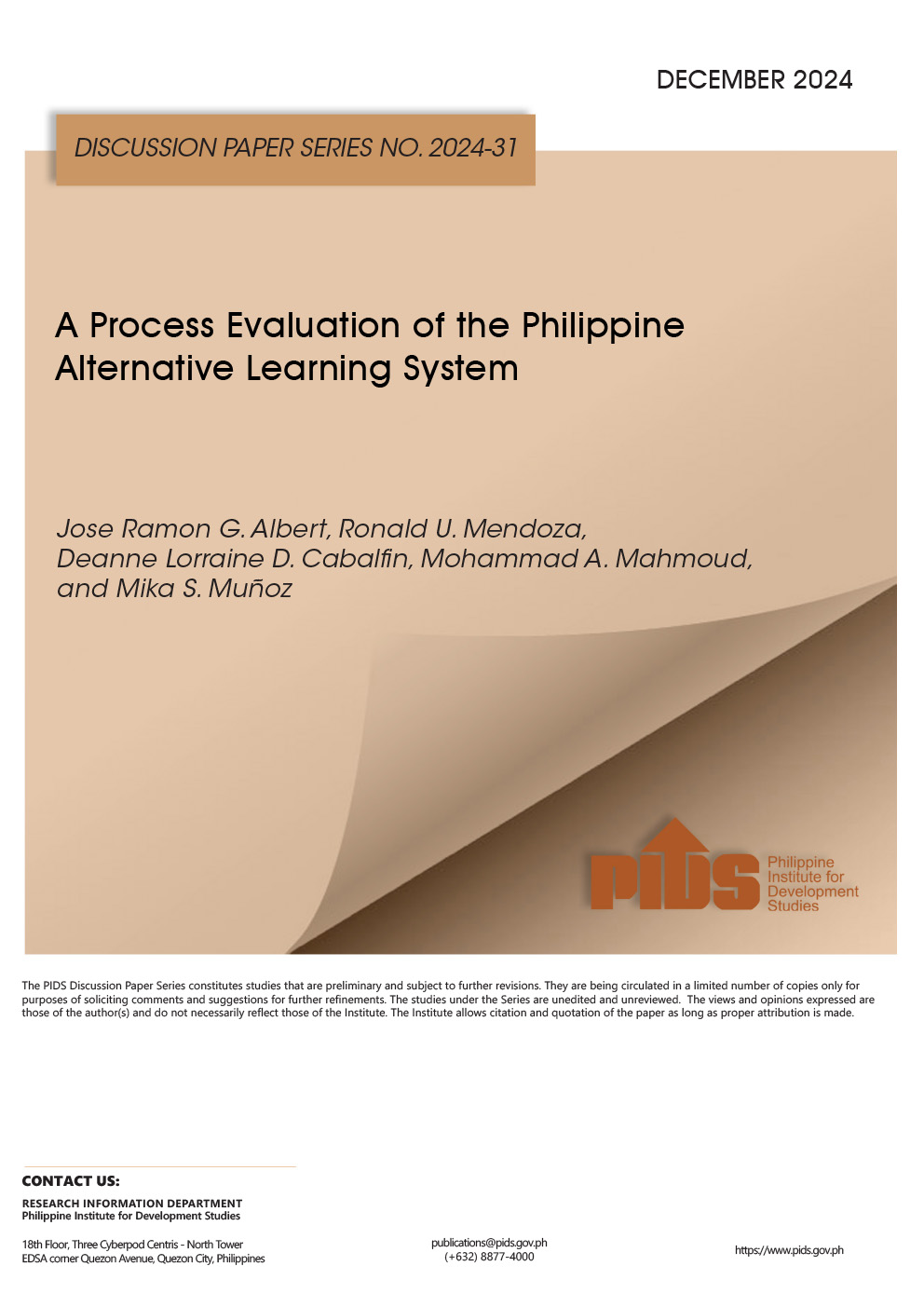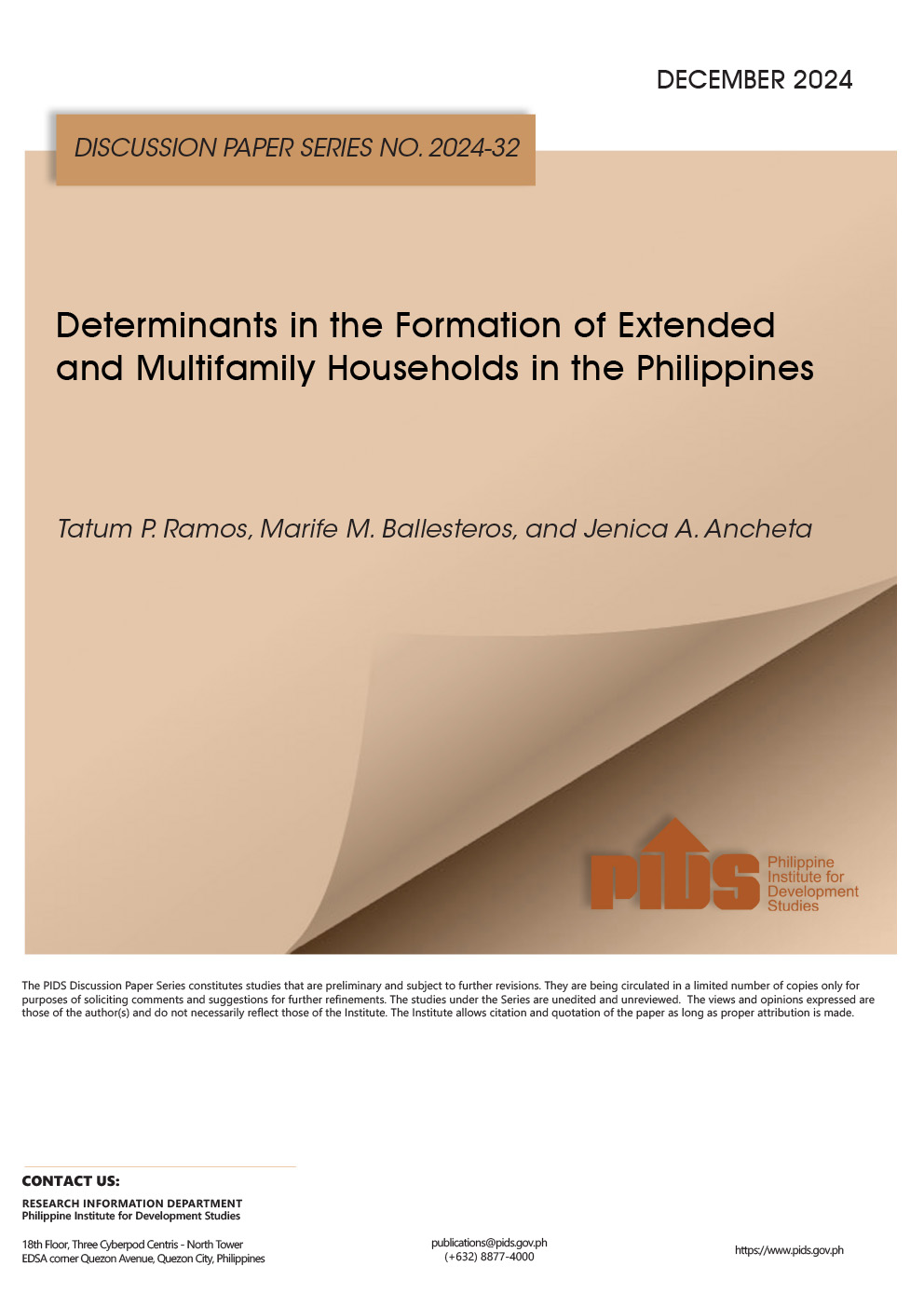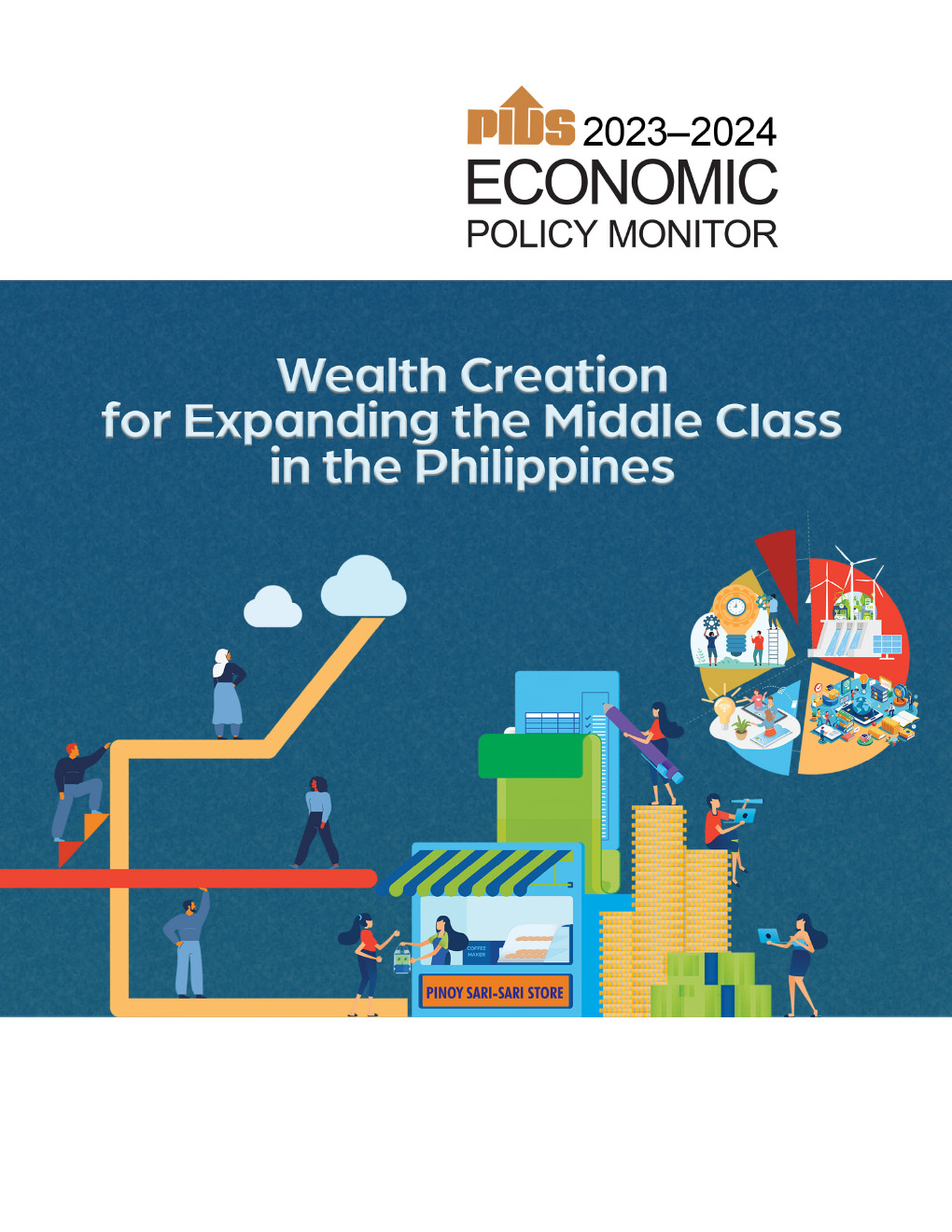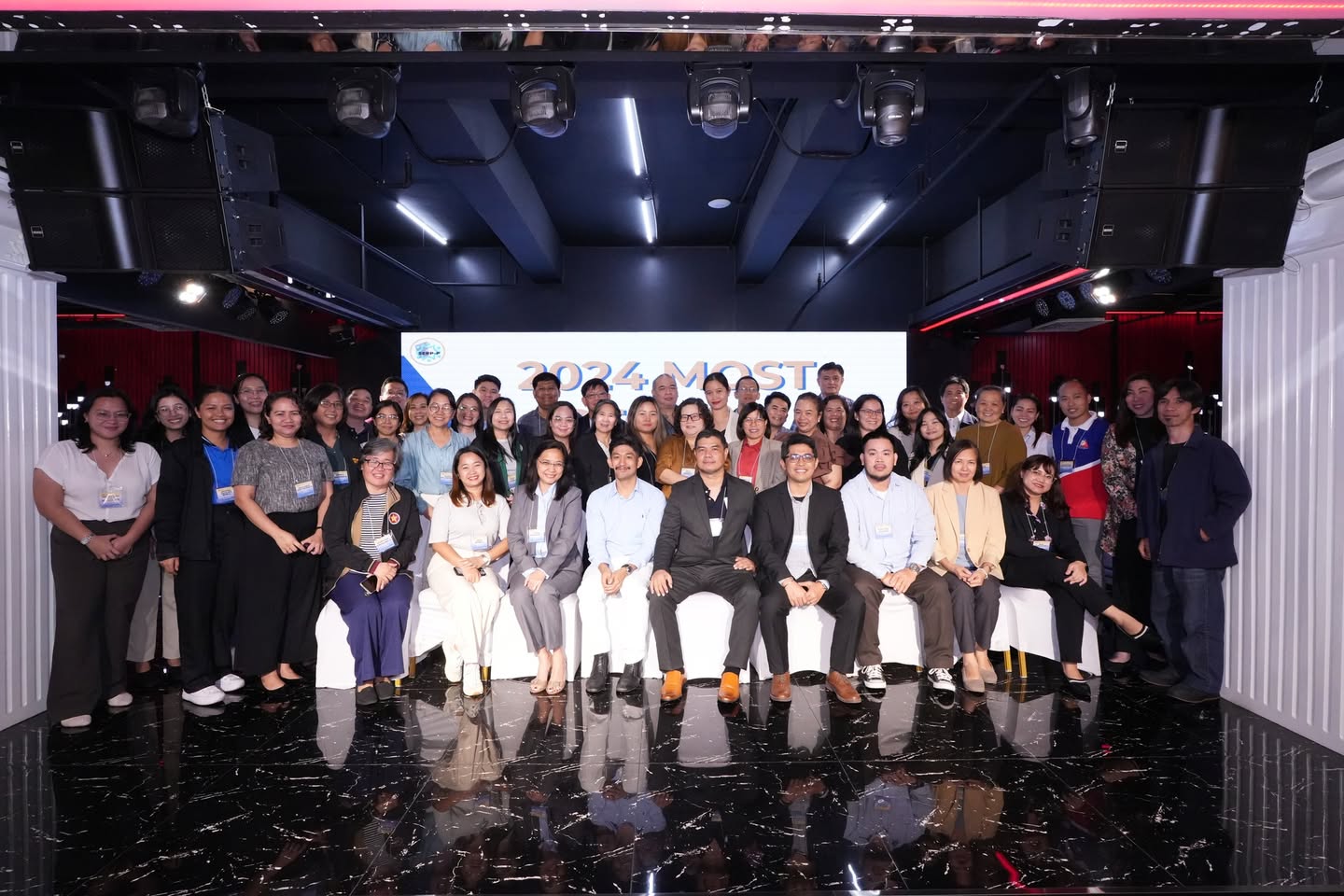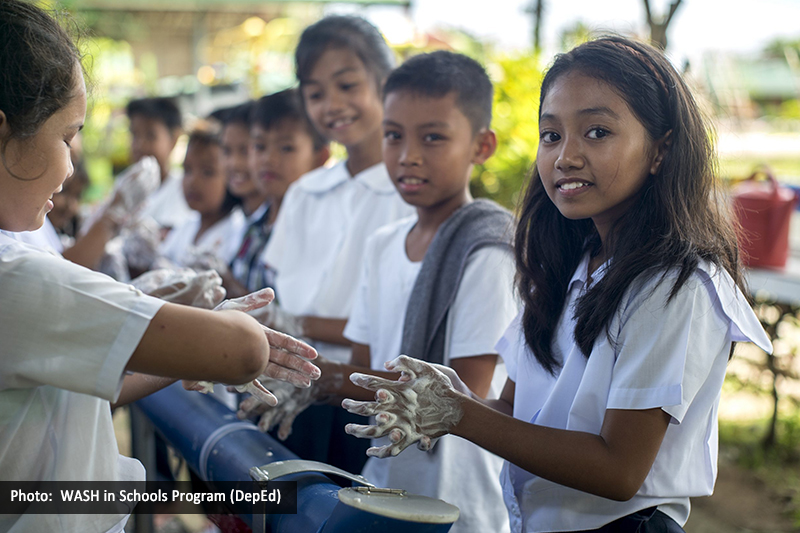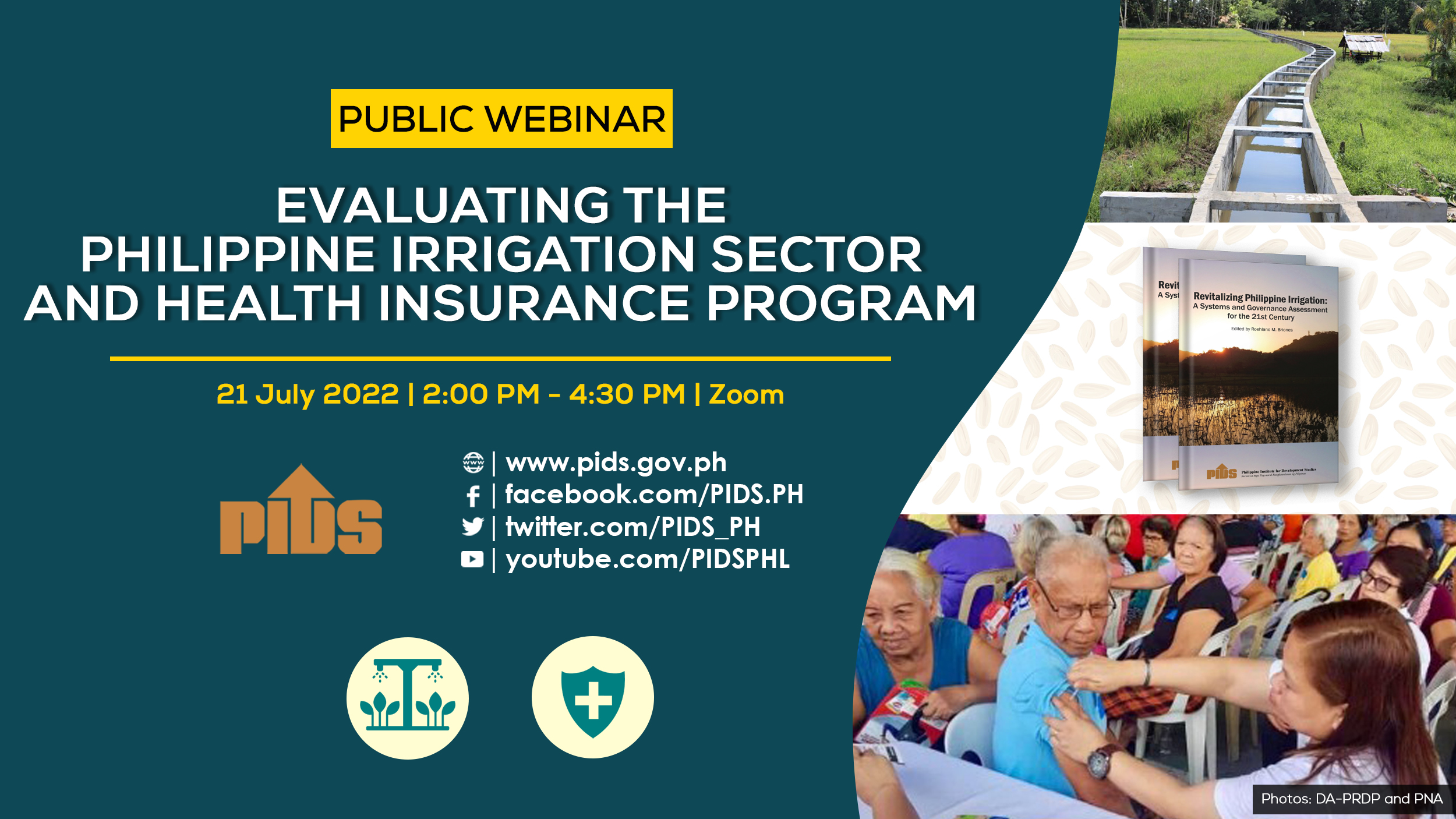Highly unequal access to health services and the large share of household out-of-pocket spending in total health expenditures underscore the importance of attaining universal health coverage. This study evaluates the major challenges involved in moving toward universal coverage of the Philippine National Health Insurance Program. The strategic approach of PhilHealth in expanding population coverage has been described as "squeezing the middle:" (i) "squeezing from the top" by expanding the PhilHealth coverage of the group subject to compulsory enrollment, i.e., the Employed Sector Program, (ii) "squeezing from the bottom" by expanding the coverage of the poor households under the Sponsored Program, and (iii) implementing interventions that are directed at expanding the coverage of nonpoor households whose heads are employed in the informal sector under the Individually Paying Program.
Recently, government decided that the national government counterpart in the premium contributions of members enrolled in the Sponsored Program will only be available for families identified as poor under the National Household Targeting System for Poverty Reduction (NHTS-PR). This decision is anchored on the expectation that the use of the NHTS-PR will improve the targeting performance of the Sponsored Program largely by enabling the government to eliminate political intervention in the selection process.
While this new policy direction helps promote better targeting of the national government subsidy, it presents distinct challenges to the PhilHealth in moving toward universal coverage. First, ensuring the enrollment in the program of all the households identified under the NHTS-PR is a major hurdle considering that the selection and enrollment of Sponsored Program beneficiaries are largely initiated by the LGUs and considering the extent of political patronage involved in the process. Second, ensuring the continued enrollment in PhilHealth of some 5.1 million households who were enrolled in the Sponsored Program in 2010 but who are not in the NHTS-PR list of poor households even if they are no longer qualified for the national government subsidy is another major challenge.
The analysis suggests that broadening population coverage of social health insurance program may be difficult to achieve without concomitant reforms in other elements of the program, particularly the payment mechanism.
Citations
This publication has been cited 4 times
- Cabalfin, Michael R. 2016. Health financing for the poor in the Philippines: Final report. Discussion Papers DP 2014-42. Philippine Institute for Development Studies.
- Capuno, Joseph et.al. 2012. Perks and public provisions : Effects of yardstick competition on local government fiscal behavior in the Philippines. UP School of Economics Discussion Papers 201208. University of the Philippines School of Economics.
- Capuno, Joseph et.al. 2016. Effects of price, information, and transactions cost interventions to raise voluntary enrollment in a social health insurance scheme: A randomized experiment in the Philippines. Health Economics, 25, no. 6, 650-662. John Wiley & Sons, Ltd..
- Manasan, Rosario. 2013. Analysis of the president's budget for 2013. Working Papers id:5391. eSocialSciences.

